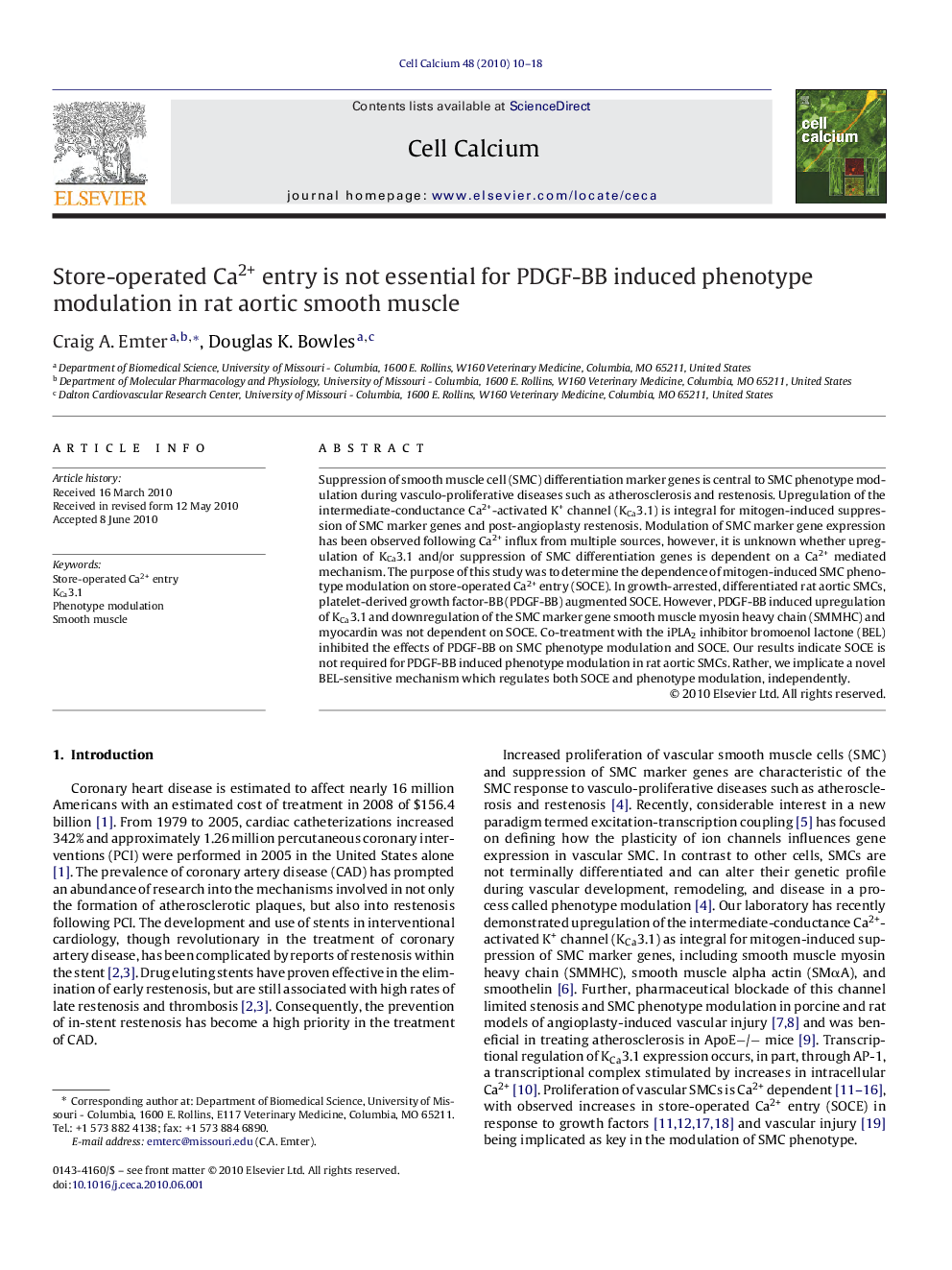| Article ID | Journal | Published Year | Pages | File Type |
|---|---|---|---|---|
| 10926421 | Cell Calcium | 2010 | 9 Pages |
Abstract
Suppression of smooth muscle cell (SMC) differentiation marker genes is central to SMC phenotype modulation during vasculo-proliferative diseases such as atherosclerosis and restenosis. Upregulation of the intermediate-conductance Ca2+-activated K+ channel (KCa3.1) is integral for mitogen-induced suppression of SMC marker genes and post-angioplasty restenosis. Modulation of SMC marker gene expression has been observed following Ca2+ influx from multiple sources, however, it is unknown whether upregulation of KCa3.1 and/or suppression of SMC differentiation genes is dependent on a Ca2+ mediated mechanism. The purpose of this study was to determine the dependence of mitogen-induced SMC phenotype modulation on store-operated Ca2+ entry (SOCE). In growth-arrested, differentiated rat aortic SMCs, platelet-derived growth factor-BB (PDGF-BB) augmented SOCE. However, PDGF-BB induced upregulation of KCa3.1 and downregulation of the SMC marker gene smooth muscle myosin heavy chain (SMMHC) and myocardin was not dependent on SOCE. Co-treatment with the iPLA2 inhibitor bromoenol lactone (BEL) inhibited the effects of PDGF-BB on SMC phenotype modulation and SOCE. Our results indicate SOCE is not required for PDGF-BB induced phenotype modulation in rat aortic SMCs. Rather, we implicate a novel BEL-sensitive mechanism which regulates both SOCE and phenotype modulation, independently.
Related Topics
Life Sciences
Biochemistry, Genetics and Molecular Biology
Cell Biology
Authors
Craig A. Emter, Douglas K. Bowles,
